For many fans of ragtime and early 20th century popular music, the name Paul Biese conjures up an image of a couple of his rags in particular, but little more. For fans of hard core early jazz, however, it is hard to separate Biese from the term "moaning saxophone," and he even left us with a song that became a Country Western classic. Paul He remains different things to different fans, but very little has been written on Biese outside of his recordings for Columbia, Victor, and other labels. Trying to piece together the story of his life, cut short near the height of his career, was a challenge at the very least. Hopefully this will fill in a void that has existed for all too long.
Paul Biese was actually his adopted name. He was born in St. Joseph, Michigan, the extreme southwestern corner of the state, as Percy Hawthorne Sudborough to Frederick Henry Sudborough and Sadie Emily Watson Applegate. Percy had two younger sisters, including Hazel Beatrice (5/1888) and Rose or Rosebud (7/1890). Percy's year of birth has been reported as anywhere from 1886 to 1888 at times, but early records indicate a firm 1885. Given the dates of birth of his sisters, the Sudboroughs were together at least into the early 1890s, living for several years in or around Benton Harbor, Michigan. However, they divorced before 1900. The census for that year found Frederick living in Indiana, and Sadie and her offspring in Chicago with two boarders. At ages 15 and 12, both Percy and Hazel had musician listed as their occupation.
Percy had two younger sisters, including Hazel Beatrice (5/1888) and Rose or Rosebud (7/1890). Percy's year of birth has been reported as anywhere from 1886 to 1888 at times, but early records indicate a firm 1885. Given the dates of birth of his sisters, the Sudboroughs were together at least into the early 1890s, living for several years in or around Benton Harbor, Michigan. However, they divorced before 1900. The census for that year found Frederick living in Indiana, and Sadie and her offspring in Chicago with two boarders. At ages 15 and 12, both Percy and Hazel had musician listed as their occupation.
 Percy had two younger sisters, including Hazel Beatrice (5/1888) and Rose or Rosebud (7/1890). Percy's year of birth has been reported as anywhere from 1886 to 1888 at times, but early records indicate a firm 1885. Given the dates of birth of his sisters, the Sudboroughs were together at least into the early 1890s, living for several years in or around Benton Harbor, Michigan. However, they divorced before 1900. The census for that year found Frederick living in Indiana, and Sadie and her offspring in Chicago with two boarders. At ages 15 and 12, both Percy and Hazel had musician listed as their occupation.
Percy had two younger sisters, including Hazel Beatrice (5/1888) and Rose or Rosebud (7/1890). Percy's year of birth has been reported as anywhere from 1886 to 1888 at times, but early records indicate a firm 1885. Given the dates of birth of his sisters, the Sudboroughs were together at least into the early 1890s, living for several years in or around Benton Harbor, Michigan. However, they divorced before 1900. The census for that year found Frederick living in Indiana, and Sadie and her offspring in Chicago with two boarders. At ages 15 and 12, both Percy and Hazel had musician listed as their occupation.That occupation had already been well-established by that time. There is a mention in the Chicago Inter-Ocean paper from June of 1898 of "Percy Sudborough and his juvenile band of boy and girl musicians..." performing for the Clark Street museum at a summer fair. Reports of where Percy got his training were not readily found. However, by 1899 he was very well-versed in violin, clarinet, and the instrument he would eventually be associated with, saxophone. It should be noted that the saxophone was little more than a half century old at this time, and it was traditionally used in concert bands and some modern orchestras, but not for popular music. Percy's skill at these three instruments got him the notice of entrepreneur Henry B. Rooney, who was known for his tours with juvenile acts. Even though they missed some schooling, he took several talented children on tours around the country to town halls and county fairs. For two seasons from early 1899 into the middle of 1900, Percy was one of his star components, and got admirable mentions in newspapers from Iowa and Kansas back into Virginia, as they toured a good portion of the country. A typical review of their talent was found in the Indianapolis [Indiana] Journal of May 10, 1899:
Master Jamie Crippen, contralto (aged ten years), Master Arthur Goff, cornetist (aged ten years), and Master Percy Sudborough, saxophone, clarionet and violin soloist (aged thirteen years), rendered their numbers with the ease, grace and finish of artists thrice their age. Master Sudborough is quite a musical prodigy, playing his three instruments with equal skill and facility.
Late in 1900, following the second national tour, Percy's mother Sadie was remarried to Carl A. Biese, and over the next few years the children were either adopted by him or eventually took his name. Percy used both Sudborough and Biese until around 1905. He may have had several reasons for this name change, more than just disassociating with his father. (In spite of his eventual name change, Percy was not totally estranged from Frederick, and there are selected newspaper accounts of visits between the two at the elder Sudborough's Indiana home whenever the lad was performing nearby.) One of the eventual reasons for the change might be a result of this interesting story that emerged from his life at the turn of the century. It is unclear how a fifteen-year-old, even one as tall and stout as Percy, would have done this in the first place, but there is a record of a Private Percy Sudborough enlisted in the Marine Corps from December 20, 1900 to at least May, taken at the barracks in Washington, D.C. The June 30 record shows him as having deserted As he was the only one with this name found in 1900, it is possibly the same person.
(In spite of his eventual name change, Percy was not totally estranged from Frederick, and there are selected newspaper accounts of visits between the two at the elder Sudborough's Indiana home whenever the lad was performing nearby.) One of the eventual reasons for the change might be a result of this interesting story that emerged from his life at the turn of the century. It is unclear how a fifteen-year-old, even one as tall and stout as Percy, would have done this in the first place, but there is a record of a Private Percy Sudborough enlisted in the Marine Corps from December 20, 1900 to at least May, taken at the barracks in Washington, D.C. The June 30 record shows him as having deserted As he was the only one with this name found in 1900, it is possibly the same person.
 (In spite of his eventual name change, Percy was not totally estranged from Frederick, and there are selected newspaper accounts of visits between the two at the elder Sudborough's Indiana home whenever the lad was performing nearby.) One of the eventual reasons for the change might be a result of this interesting story that emerged from his life at the turn of the century. It is unclear how a fifteen-year-old, even one as tall and stout as Percy, would have done this in the first place, but there is a record of a Private Percy Sudborough enlisted in the Marine Corps from December 20, 1900 to at least May, taken at the barracks in Washington, D.C. The June 30 record shows him as having deserted As he was the only one with this name found in 1900, it is possibly the same person.
(In spite of his eventual name change, Percy was not totally estranged from Frederick, and there are selected newspaper accounts of visits between the two at the elder Sudborough's Indiana home whenever the lad was performing nearby.) One of the eventual reasons for the change might be a result of this interesting story that emerged from his life at the turn of the century. It is unclear how a fifteen-year-old, even one as tall and stout as Percy, would have done this in the first place, but there is a record of a Private Percy Sudborough enlisted in the Marine Corps from December 20, 1900 to at least May, taken at the barracks in Washington, D.C. The June 30 record shows him as having deserted As he was the only one with this name found in 1900, it is possibly the same person.At some point over the next few years, presumably still honing his musical craft, Percy relocated to Covington, Kentucky, and served for a time in the U.S. Army's 4th Infantry as a musician. He was listed as such in 1906 Covington city directory as Percy H. Biese. While there he met, then married Anna Wilmes. The marriage record from the Covington Immaculate Conception Catholic Church showed "no banns," suggesting that Percy, as Sudborough, might have been Catholic. Although it is hard to confirm, the only Anna Wilmes that was a viable candidate in that area would have been around 13-year-old. Marriage at that age was not common, but not unheard of in this part of the country during this period. Still touring as a musician over the next couple of years, Percy found himself either living or temporarily staying in New York City, where on December 1, 1908, Anna gave birth to a baby boy. Actually, there is no confirmation that Percy himself was there at the time, and soon he would not be a part of Anna's life at all.
The 1910 census, taken in Chicago, showed Percy, now officially Paul Biese, residing with his mother, stepfather, sister, and a presumed wife, Fanny. Actually, there is no record prior to 1910 showing that he had married Mary Francis Callahan, indicating that he might have run into trouble getting an official divorce from Anna through the Catholic church. They showed as having married in 1908, but given the birth of his son in New York this was unlikely.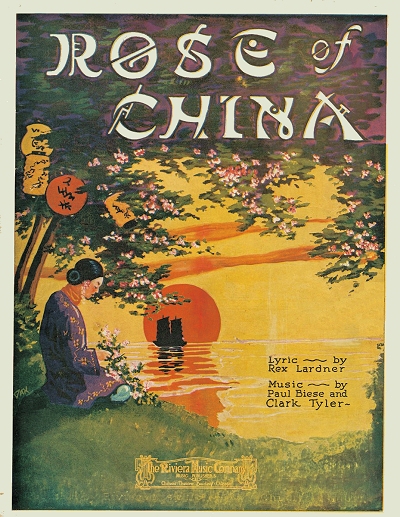 The enumeration showed Paul's official occupation to be an orchestra musician. Paul and Fanny would eventually wed officially in Indiana on July 13, 1914, under his legal birth name of Sudborough.
The enumeration showed Paul's official occupation to be an orchestra musician. Paul and Fanny would eventually wed officially in Indiana on July 13, 1914, under his legal birth name of Sudborough.
 The enumeration showed Paul's official occupation to be an orchestra musician. Paul and Fanny would eventually wed officially in Indiana on July 13, 1914, under his legal birth name of Sudborough.
The enumeration showed Paul's official occupation to be an orchestra musician. Paul and Fanny would eventually wed officially in Indiana on July 13, 1914, under his legal birth name of Sudborough.Mentioned in passing when he was younger that Paul was a "big boy," pictures of him from the mid-1910s and later make it clear that he loved to indulge in food. At times over the next decade, he would approach an estimated weight of 400 pounds, and rarely less than 250. This appears to have not caused him any particular mobility problems, nor any evident interference with his playing skills. Biese continued to hone his craft, playing in traveling orchestras as well as in Chicago over the next few years, mostly on the alto and tenor saxophones. However, he was working on another skill as well – that of composition. In this discipline, however, although Paul had little issue with melodic lines and figuring out the harmonies, he admittedly needed help to flesh out his ideas into a form that the average consumer could enjoy through sheet music. To that end, in 1913 he teamed up with an established musician and composer who had been working with Chicago publishers for some years, Frank Henri Klickmann.
Klickmann had already enjoyed a ragtime success with Knockout Drops in 1910, and a handful of clever instrumentals and songs through 1913 when the two teamed up. It is unclear of their co-compositions who concocted what part of each piece, but it is likely that Biese contributed the main thematic and melodic content, while Klickmann worked out the chord progressions, and perhaps a trio or verse. Two of their early successes in 1913 were Dynamite and The Squirrel Rag, the latter of which appears to have had a prolific presence that remains in collections and antique malls a century later. Their two-step, Round the Hall, was both recorded and performed live on several occasions over the next couple of years. It is clearly through Klickmann's assistance that Biese became known as a capable composer.
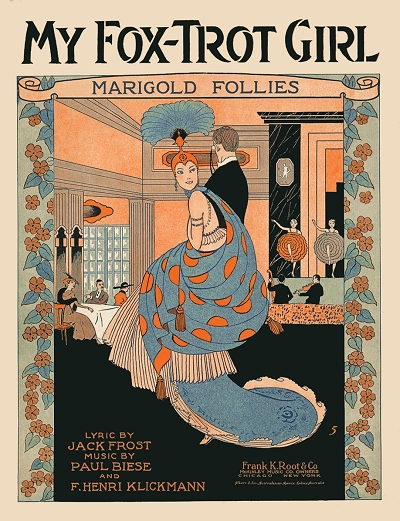 In 1914 Biese would pick up yet another songwriting partner with which he had some minor success, the already established bookkeeper turned lyricist James Will Callahan (no relation to Paul's wife Fanny). During this period, Biese was becoming more established as a band leader of both a trio and a small dance orchestra, still playing venues around the Midwest with occasional trips back East. He soon scored some very fine venues in Chicago, and was among the first white band leaders to feature the tenor saxophone prominently as a lead instrument in popular music. Most of the mentions of him in newspapers of the early-to-mid-1910s were about where he was performing or what song of his was available in the stores. But they would soon start to echo what had been said about him as a child – that he had a real talent for performance.
In 1914 Biese would pick up yet another songwriting partner with which he had some minor success, the already established bookkeeper turned lyricist James Will Callahan (no relation to Paul's wife Fanny). During this period, Biese was becoming more established as a band leader of both a trio and a small dance orchestra, still playing venues around the Midwest with occasional trips back East. He soon scored some very fine venues in Chicago, and was among the first white band leaders to feature the tenor saxophone prominently as a lead instrument in popular music. Most of the mentions of him in newspapers of the early-to-mid-1910s were about where he was performing or what song of his was available in the stores. But they would soon start to echo what had been said about him as a child – that he had a real talent for performance.On December 22, 1916, just as the war was escalating in Europe and America was nearing involvement, Mary Frances Biese gave birth to Paul Francis in Chicago. Within a three months the first war draft would be implemented, and despite the unpopularity of American involvement in the conflict, many would volunteer to fight. Of curiosity, however, is a mention in Biese's obituary about having been in the Army (confirmed in the 1900s), Marine Corps (unconfirmed but possible around 1900), and U.S. Navy (no record was located). It was also reported that he had been "seriously wounded in France" during the war. That Biese filled out his draft record during the last call in September 1918 suggests otherwise, as does the trail of mentions of his performances during the conflict and the continuing moderate flow of compositions. Paul's physical state alone, described as "rotund" on the draft card, would have made him potentially unfit for the strenuous duties of military service, even more so in his thirties. So, this mention remains as a curious and suspect footnote concerning his life.
For around four years, Klickmann had continued to write with and for Biese, and provided arrangements for his various orchestras, many issued by Harold Rossiter or other Chicago publishers. During 1916 and 1917, this included many tunes with lyrics by the prolific Harold G. "Jack" Frost. Klickmann's involvement with Biese sometimes required traveling with the group as its fame and bookings expanded, and the work finally took a toll on Henri. In May of 1917 it was announced in the entertainment trade papers that "F. Henri Klickmann, the composer-arranger, has severed connections with the Paul Biese orchestra in order to devote all of his time to arranging.
He is making his headquarters with the McKinley Music Company." Klickmann would eventually move to Manhattan where he would remain until his death. This absence might explain, in part, the dearth of Biese compositions during 1918 and 1919.
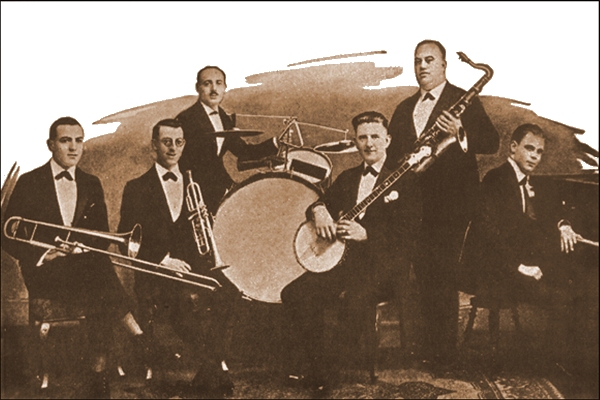 |
As jazz made inroads into, and soon became the core of popular music in 1917 and 1918, Biese and his group went along for the ride, although in a more measured way than many of the "hot" ensembles that had sprung up in New York and Chicago. He worked as some of the nicer venues in Chicago, including the Marigold Gardens and the Bismarck Hotel. But there were still tours and life on the road. His 1918 draft record was submitted in Cleveland, Ohio, while his band was performing an extended stint. The record further indicates that Frances, and likely his son Paul, were also staying with him. He also took the occasional trip to New York City and select venues there, usually hotels or night spots.
While in New York in the late fall of 1919, Biese decided to try and get his group recorded and in circulation. Armed with some of his better arrangements, including the current hit Dardanella and W.C. Handy's Yellow Dog Blues, the Biese group spent late November and much of December in studios, even recording some of their numbers two to three times on different labels, including Vocalian-Aeolian, Brunswick, OKeh, Victor and Columbia. Most of the sides were soon released into the world, and Paul Biese's Novelty Orchestra, as well as his Novelty Trio, fronted by his prominent "moaning saxophone," became best-sellers. Their unique sound actually helped to usher in the 1920s as a harbinger of the currently evolving style that would culminate in orchestras like that of the self-proclaimed "King of Jazz," Paul Whiteman.
The January 1920 enumeration would show Paul back in Chicago residing with Frances, Paul, a servant, and one roomer, working as a theatre musician. This would be a year of breakout and change for the oversized Biese. For starters, he decided to take drastic steps to gain some control over his size. Now a popular figure in Chicago, both his struggle with girth and his surgical solution were publicized in papers around the country, including this syndicated account found in many newspapers on February 13, 1920.
Through one of the most unusual surgical operations on record, Paul Biese, well known musician and one of Chicago's heaviest men, is 100 pounds lighter [Note: some accounts cited only 50 pounds]. The operation was performed by Dr. Max Thorek, who removed 100 pounds of skin and fat from Biese's abdomen.
"The operation was of a plastic nature," said Dr. Thorek. "It will be impossible for the excess fat to return. With its removal the skin was cut away and tightened so that fat cannot longer grow about the girth."
Biese will later have fat removed from his neck and face. He will be completely recovered in two weeks, Dr. Thorek said.
This pre-liposuction period procedure was not endured without a great deal of risk,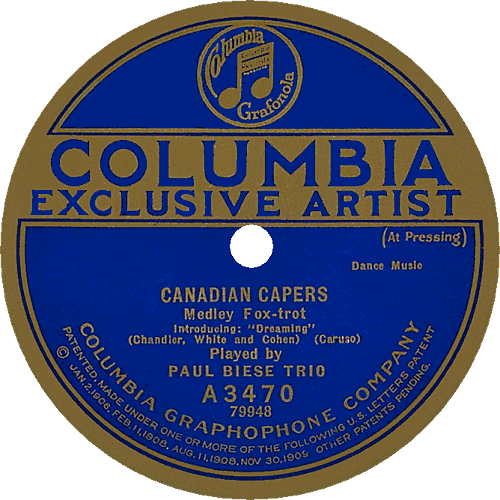 but it seems to have given Paul some new life. Following a May tour of the island of Cuba, Biese and his orchestra and novelty trio returned to the Columbia studios in New York in June of 1921, where they would cut a number of new sides, following them up with more sessions in August and December, and even into January of 1921. Paul's moaning saxophone, which was getting good promotion from Columbia and effective press overall, brought life to a number of popular songs of the time. A number of the sides included vocals and banjo playing by vaudeville star Frank Crumit, very possibly at the behest of Columbia management. Some of the tracks were medleys, although the titles used by Columbia often had the second song noted with "Introducing …," such as Pebbles: Introducing "Beautiful Annabelle Lee." This became a somewhat common practice in the 1920s and 1930s, culminating with a famous comic manifestation of this paradigm by the Benny Goodman Orchestra and Louis Prima in 1937 with his hit Sing, Sing, Sing (with a Swing): Introducing "Christopher Columbus."
but it seems to have given Paul some new life. Following a May tour of the island of Cuba, Biese and his orchestra and novelty trio returned to the Columbia studios in New York in June of 1921, where they would cut a number of new sides, following them up with more sessions in August and December, and even into January of 1921. Paul's moaning saxophone, which was getting good promotion from Columbia and effective press overall, brought life to a number of popular songs of the time. A number of the sides included vocals and banjo playing by vaudeville star Frank Crumit, very possibly at the behest of Columbia management. Some of the tracks were medleys, although the titles used by Columbia often had the second song noted with "Introducing …," such as Pebbles: Introducing "Beautiful Annabelle Lee." This became a somewhat common practice in the 1920s and 1930s, culminating with a famous comic manifestation of this paradigm by the Benny Goodman Orchestra and Louis Prima in 1937 with his hit Sing, Sing, Sing (with a Swing): Introducing "Christopher Columbus."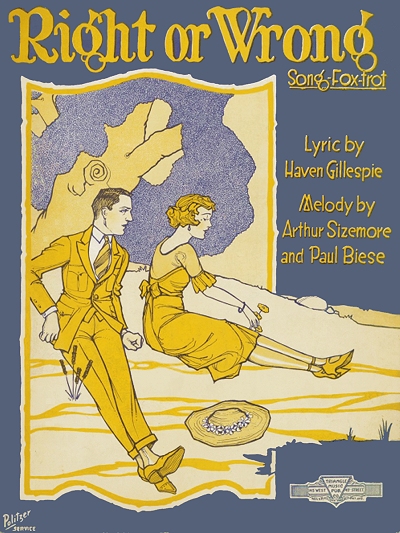 For Columbia and Biese, this methodology allowed them to hedge their bets that at least one of the tunes would resonate with the buying public.
For Columbia and Biese, this methodology allowed them to hedge their bets that at least one of the tunes would resonate with the buying public.
 but it seems to have given Paul some new life. Following a May tour of the island of Cuba, Biese and his orchestra and novelty trio returned to the Columbia studios in New York in June of 1921, where they would cut a number of new sides, following them up with more sessions in August and December, and even into January of 1921. Paul's moaning saxophone, which was getting good promotion from Columbia and effective press overall, brought life to a number of popular songs of the time. A number of the sides included vocals and banjo playing by vaudeville star Frank Crumit, very possibly at the behest of Columbia management. Some of the tracks were medleys, although the titles used by Columbia often had the second song noted with "Introducing …," such as Pebbles: Introducing "Beautiful Annabelle Lee." This became a somewhat common practice in the 1920s and 1930s, culminating with a famous comic manifestation of this paradigm by the Benny Goodman Orchestra and Louis Prima in 1937 with his hit Sing, Sing, Sing (with a Swing): Introducing "Christopher Columbus."
but it seems to have given Paul some new life. Following a May tour of the island of Cuba, Biese and his orchestra and novelty trio returned to the Columbia studios in New York in June of 1921, where they would cut a number of new sides, following them up with more sessions in August and December, and even into January of 1921. Paul's moaning saxophone, which was getting good promotion from Columbia and effective press overall, brought life to a number of popular songs of the time. A number of the sides included vocals and banjo playing by vaudeville star Frank Crumit, very possibly at the behest of Columbia management. Some of the tracks were medleys, although the titles used by Columbia often had the second song noted with "Introducing …," such as Pebbles: Introducing "Beautiful Annabelle Lee." This became a somewhat common practice in the 1920s and 1930s, culminating with a famous comic manifestation of this paradigm by the Benny Goodman Orchestra and Louis Prima in 1937 with his hit Sing, Sing, Sing (with a Swing): Introducing "Christopher Columbus." For Columbia and Biese, this methodology allowed them to hedge their bets that at least one of the tunes would resonate with the buying public.
For Columbia and Biese, this methodology allowed them to hedge their bets that at least one of the tunes would resonate with the buying public.One song that did become an enduring classic, albeit not so much in jazz, was his catchy 1921 ballad Right or Wrong. After several renditions recorded by jazz bands of various sizes, it was reconstructed by Texas singer Bob Wills as a Western Swing tune, and has remained a Country and Western standard since that time, one of the most famous versions by singer George Strait recorded in 1984. Lyricist Haven Gillespie ended up getting an award from ASCAP the following year for his role in the piece.
With his newfound fame, Paul managed a running gig with the Edgewater Beach Hotel, one of the more stylish Chicago venues. But fame had its drawbacks as well. Around 1922, either tired of life on the road or life at home with her husband on the road, Frances was separated from Paul, and they would eventually divorce. Given that they were not readily found in subsequent census records, Frances and Paul, Jr., probably took on a different last name. Paul's contract with Columbia also ran out at the end of 1922, and his groups did not record until April of 1924, this time on the Victor label. Another public incident involved Paul and his new mate, sometime actress Modesse La Fond, which was relayed in several newspapers on April 12, 1923:
Paul Biese, orchestra, leader; Miss Modesse La Fond, a motion picture actress, and Mrs. Edith Fellows, wife of a broker, were held up early today by two masked men and robbed of a small amount of cash and $7.500 in jewelry. The trio were on their way from the Edgewater Beach hotel to the Marigold Gardens in connection with a celebration of Biese's birthday, they told police. Rings were stripped from Biese's fingers and bracelets from Miss La Fond's wrists.
It appears that Biese's life at this time was concentrated on performing and indulging, with no recorded output in 1923 and only a handful of compositions issued after 1921. His final five tracks, recorded in 1924, indicated that his deal with Victor Records of Camden, New Jersey, was likely a one-time thing with options for future engagements, as he was not officially considered to be a Victor artist. Some of his more prominent band members started to peel off as well, many of them becoming leaders of their own merit, including pianist Jules Buffano, pianist Arnold Johnson, trombonist Lloyd Barber, and banjoist Ralph Williams. By 1925, with the jazz age in full swing, and a plethora of competing bands and orchestras vying for record sales and radio air time, Biese was starting to lose ground.
Continuing with his strenuous road trips, it was during a stint at the Castle Farm Roadhouse in Cincinnati, Ohio, in late 1925 that Biese took ill during his daily lunch. He entered Good Samaritan hospital where it was determined he needed surgery for a strangulated hernia. The ordeal was more than his obese frame could take, and he died at the hospital soon after the surgery, the result of a myocardial failure related to peritonitis. The death certificate cites his spouse as La Fond, but no record of any marriage between the two was located, so she may have simply been his closest personal contact. His remaining group soon disbanded, most of them absorbed by other orchestras or forming groups of their own. Within a matter of a few years, the shooting star that was Biese was all but forgotten. Even today, only a select number of jazz aficionados are aware of his fine work, which is available through YouTube, Spotify and iTunes. Just as his life was worth exploring, so is his remaining musical legacy.
The information for this biography was derived from public and government records, family trees, recording logs, newspapers and music periodicals.
 Known Compositions
Known Compositions